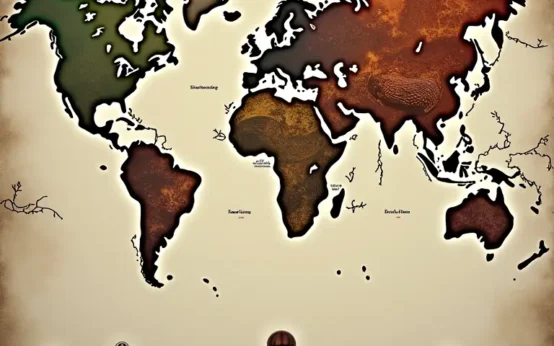For millennia, human beings have communicated through a breathtaking diversity of languages. Each one is more than just a system of words; it’s a window into a culture, a worldview, a history. But languages, like cultures, are not immortal. They rise, flourish, and sometimes… fade away. This article will delve into the captivating world of lost languages, exploring what causes them to disappear, the efforts to decipher them, and the stories they hold waiting to be rediscovered. We’ll journey through time and across continents, from the ancient scripts of Mesopotamia to the vanishing tongues of indigenous communities, and ponder what it means when a language falls silent.
What Does It Mean for a Language to Be ‘Lost’?
The term “lost language” can be surprisingly ambiguous. It doesn’t always mean a language has vanished without a trace. Often, it signifies that a language is no longer actively spoken by a community. However, remnants might remain in written form, archaeological discoveries, or loanwords within other languages. We can categorize lost languages in several ways:
- Extinct Languages: These languages have no native speakers left, and no one speaks them as a first language anymore. Examples include Latin (though it survives in modified forms in Romance languages) and Cornish.
- Dead Languages: Similar to extinct languages, but often with a continued presence in religious texts, academic study, or legal contexts. Latin again fits this category, as does Classical Greek.
- Dormant Languages: These are languages with no current native speakers, but with a documented grammar and vocabulary, and potential for revival. Hebrew is a fascinating example – considered dormant for centuries, it was successfully revived as a spoken language in the 19th and 20th centuries.
- Undeciphered Languages: Languages for which we have written records, but have not yet been able to understand their meaning. Linear A is a prime example (more on that later!).
The reasons for language loss are complex and varied, often intertwined with historical, social, and political forces.
The Causes of Language Loss
Language loss isn’t a natural process in the same way that biological extinction is. It’s almost always the result of external pressures. Here are some of the key drivers:
- Conquest and Colonization: Throughout history, dominant empires and colonial powers have often imposed their languages on conquered populations. This could be through direct suppression of indigenous languages, or simply through the economic and social advantages of using the dominant language.
- Globalization: The increasing interconnectedness of the world, while offering many benefits, also leads to the dominance of a few global languages (English, Spanish, Mandarin Chinese, etc.). Smaller languages struggle to compete.
- Economic Pressure: In many cases, individuals and communities choose to adopt a more widely spoken language to improve their economic opportunities.
- Social Stigma: Sometimes, speaking a minority language is associated with lower social status, leading people to abandon it in favor of the dominant language.
- Natural Disasters and Disease: Catastrophic events can decimate populations, and with them, the languages they speak.
It’s important to note that language loss is often a gradual process, occurring over generations. A language might first become restricted to certain domains (like religious ceremonies), then dwindle to just a handful of elderly speakers, and eventually fall silent.
Iconic Examples of Lost Languages
Linear A
One of the most tantalizing mysteries in linguistics is Linear A, a script used by the Minoan civilization of Crete (around 1800-1450 BC). We have thousands of inscriptions on clay tablets and other artifacts, but despite decades of research, Linear A remains largely undeciphered. Unlike Linear B (which was used to write an early form of Greek and was successfully deciphered), Linear A doesn’t seem to be related to any known language family. The script itself is syllabic, meaning each symbol represents a syllable rather than a single sound. The Minoan civilization was a sophisticated Bronze Age culture, and unlocking the secrets of Linear A would undoubtedly reveal much more about their society, religion, and daily life.

Etruscan
The Etruscans were a powerful civilization in ancient Italy, predating the Romans. They left behind a substantial corpus of inscriptions, but their language, Etruscan, is not closely related to any other known language. We can read Etruscan inscriptions, and we have a good understanding of its grammar, but understanding the meaning of the texts remains a challenge. The vocabulary is largely unique, making it difficult to establish connections with other languages. Did they come from Anatolia? North Africa? The origin of the Etruscans – and the key to deciphering their language – remains a subject of debate.
Sumerian
Sumerian, spoken in ancient Mesopotamia (modern-day Iraq) from around 3500 BC, is considered one of the oldest known written languages. It’s not related to any other language family, making it a linguistic isolate. While Sumerian eventually died out as a spoken language, it continued to be used as a literary and scholarly language for centuries afterwards. We have a wealth of Sumerian texts, including myths, hymns, legal codes, and administrative records, providing a detailed glimpse into the world of ancient Mesopotamia. The decipherment of Sumerian was a major breakthrough in our understanding of early civilization. You can learn more about ancient civilizations that vanished in this video:
Cornish
Cornish, a Celtic language spoken in Cornwall (southwest England), provides a more recent example of language loss and revival. It declined steadily from the Middle Ages, and by the 18th century, it was considered extinct. However, a dedicated group of linguists and enthusiasts began to revive Cornish in the 20th and 21st centuries. Today, while it’s still a minority language, Cornish is experiencing a resurgence, with a small but growing number of speakers. It demonstrates that even languages considered “dead” can potentially be brought back to life.
Manx
Similar to Cornish, Manx is a Celtic language spoken on the Isle of Man. It also faced decline and near extinction, with the last native speaker, Ned Maddrell, dying in 1974. However, like Cornish, there’s been a revival effort, and Manx is now taught in schools and is spoken by a small but dedicated community.
The Importance of Decipherment
Deciphering a lost language is far more than an academic exercise. It’s about recovering a lost voice, a lost perspective. When we unlock the secrets of a lost language, we gain access to:

- Historical Knowledge: Lost languages can reveal details about past civilizations, their beliefs, their social structures, and their interactions with other cultures.
- Cultural Understanding: Language is deeply intertwined with culture. Deciphering a language can provide insights into the values, traditions, and worldview of the people who spoke it.
- Linguistic Insights: Studying lost languages can help us understand the evolution of language itself, and the relationships between different language families.
The process of decipherment is often painstaking and requires a combination of linguistic expertise, historical knowledge, and a bit of luck. Scholars often look for bilingual texts (texts written in both the lost language and a known language) as a key to unlocking the code. They also analyze the patterns and structures within the lost language itself, looking for clues about its grammar and vocabulary.
The Modern Crisis of Language Loss
While language loss has been occurring throughout history, the rate of loss has accelerated dramatically in recent times. According to UNESCO, approximately 40% of the world’s 7,000 languages are endangered. Many of these languages are spoken by small, marginalized communities, and are particularly vulnerable to the pressures of globalization and cultural assimilation. This isn’t just a loss for the communities who speak these languages, it’s a loss for humanity as a whole.
Each language embodies a unique way of seeing the world. When a language disappears, we lose not just words, but also a wealth of knowledge, stories, and cultural heritage. We lose different ways of categorizing the world, different ways of thinking, and different ways of expressing human experience. It’s akin to losing a piece of the human puzzle.
What Can Be Done to Preserve Endangered Languages?
The good news is that there’s growing awareness of the importance of language preservation, and a number of initiatives are underway to protect endangered languages. These include:
- Language Documentation: Recording and archiving endangered languages, creating dictionaries, grammars, and other resources.
- Language Revitalization Programs: Supporting communities in their efforts to revive their languages, through language classes, immersion programs, and cultural events.
- Language Nest Programs: Creating immersive language environments for young children, where they are exposed to the language from an early age.
- Promoting Multilingualism: Encouraging the use of multiple languages in education and public life.
- Advocacy and Awareness: Raising awareness about the importance of language preservation, and advocating for policies that support endangered languages.
Technology also plays a role. Digital archives, online dictionaries, and language learning apps can all help to preserve and promote endangered languages.
The Future of Lost Languages
The story of lost languages is a complex and poignant one. It’s a story of loss, but also of resilience, and of the enduring human spirit. While some languages may be lost forever, others may be revived, and others may continue to linger in the shadows, waiting to be rediscovered. The ongoing work of linguists, archaeologists, and dedicated communities offers hope that we can continue to unlock the secrets of the past, and preserve the linguistic diversity of our planet.
Understanding the past often sheds light on the present. If you’re interested in fascinating facts and trivia, you might enjoy reading Decoding Animal Superstitions: Origins & Global Beliefs.


 The Curious Acoustics of Historical Echo Chambers: Resonance, Ritual, and Revelation
The Curious Acoustics of Historical Echo Chambers: Resonance, Ritual, and Revelation  The Curious Cartography of Scent: Mapping Perfume Ingredients Through History
The Curious Cartography of Scent: Mapping Perfume Ingredients Through History  The Curious Lexicon of Lost Trades
The Curious Lexicon of Lost Trades  The Surprisingly Consistent Science of Historical Ice Harvesting – A Frozen History of Commerce & Preservation
The Surprisingly Consistent Science of Historical Ice Harvesting – A Frozen History of Commerce & Preservation  The Unexpectedly Consistent Science of Historical Buttonhooks – Fashion, Function & Forgotten Tools
The Unexpectedly Consistent Science of Historical Buttonhooks – Fashion, Function & Forgotten Tools  The Surprisingly Consistent Science of Historical Toy Soldiers – Miniature Warfare, Materials & Collective Play
The Surprisingly Consistent Science of Historical Toy Soldiers – Miniature Warfare, Materials & Collective Play